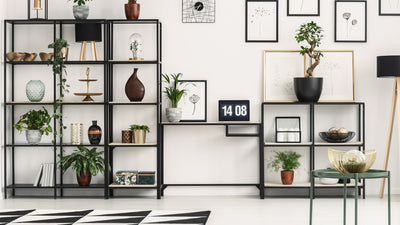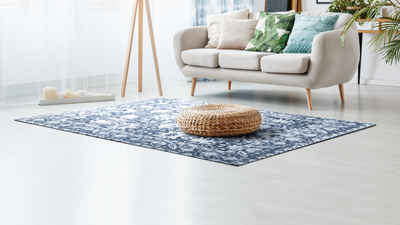Can You Put A Rug Over Your Carpet? Expert Rug Styling Tips
You can’t deny that wall to wall carpeting makes a huge impact on your home, both practically and decoratively. Carpets add insulation, warmth and depth to the home at a fraction of the cost of hardwood floors, and they also add colour, character and personality. But you’re not always going to love your carpet, especially if it has worn down over time. So can you put a rug on carpet? If you’re struggling to add an extra cosy element to your home, then doubling down and adding a rug to your carpeted floor may be one solution.
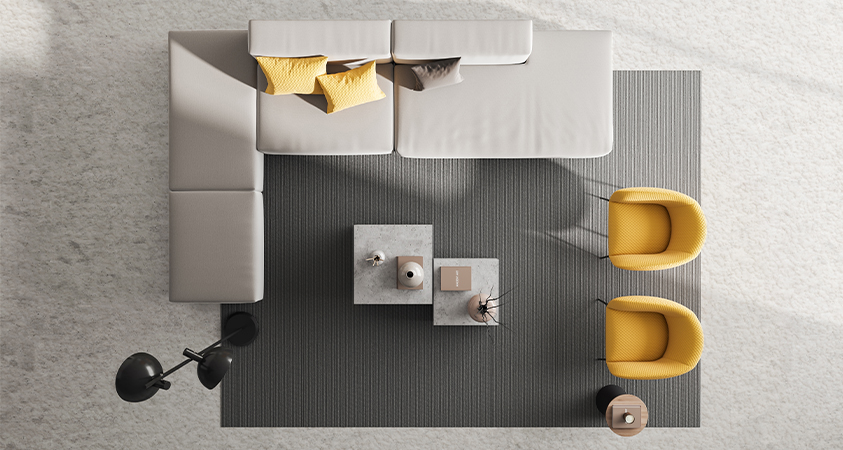
It might feel excessive to lay a rug over carpet, but the results may surprise you. If you’re looking for a way to spice things up coming into winter, you’ve come to the right place. Put an Artiss area rug over the floor and take your carpeted room to a whole new level.
Benefits of Putting a Rug Over Carpet
Hide damage to your carpet
It can be annoying and costly to repair your carpeted floors. Worst case, you have to cut out a section of carpet, find a donor carpet that matches it exactly, and then install it without making it look out of place. When your carpets are showing signs of damage, save time and money by covering the damage with a new area rug. Your floors will look good as new and you won’t have to worry about those pesky repairs.
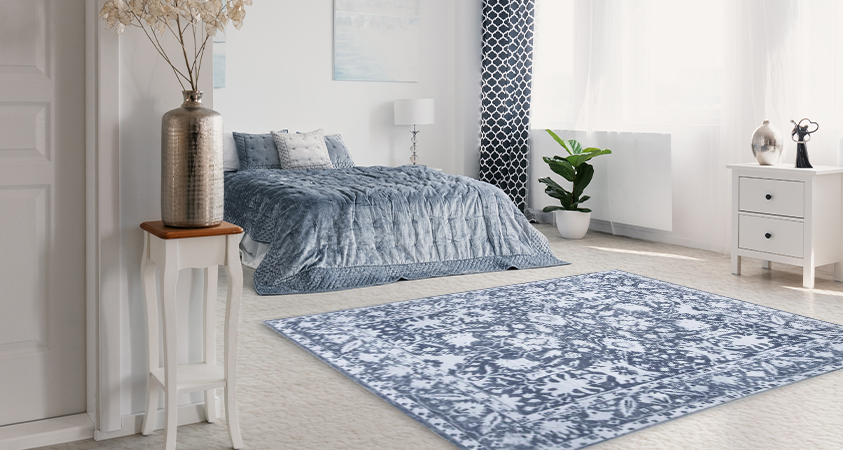
Add colour and texture to the room
Does your floor feel flat or lifeless? Think it could use a pop of colour? An area rug is a great way to add colour and texture to a carpeted room that might be lacking. Using multiple colours, patterns and textures adds visual interest, character and balance to the space, making it come alive - just like your guests when they see your gorgeous living room!
Redecorate on a budget
Maybe your wall to wall carpet doesn’t give you the same joy that it used to, but you don’t have the budget to get a new carpet installed. Or, you’re lacking the time, energy and expertise for such an extensive DIY project. A new area rug is a budget-friendly solution to interior decoration boredom. You’ll feel refreshed and rejuvenated with this easy change of scenery, and you’ll wonder why you didn’t do it sooner.
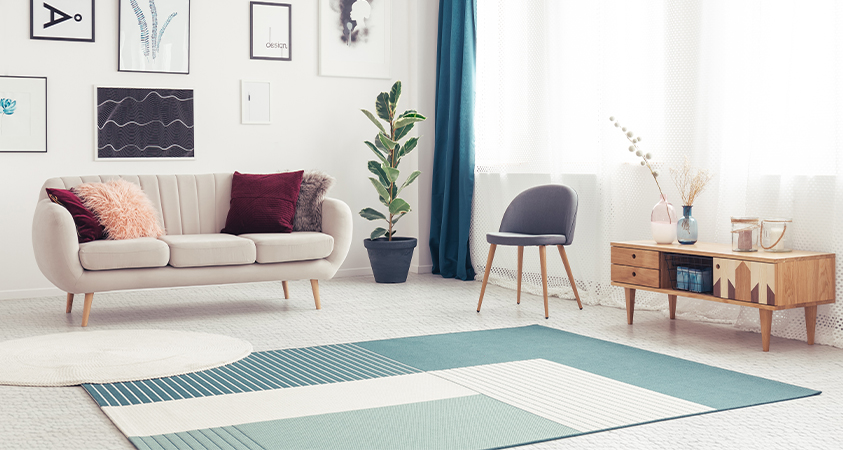
Add unique style to a rental
It’s easy to feel like a rental property isn’t fully your own, especially if you have an ugly carpet that completely goes against your sense of style. Using a rug can help give you more control over your space, and you won’t have to leave it behind if you move.
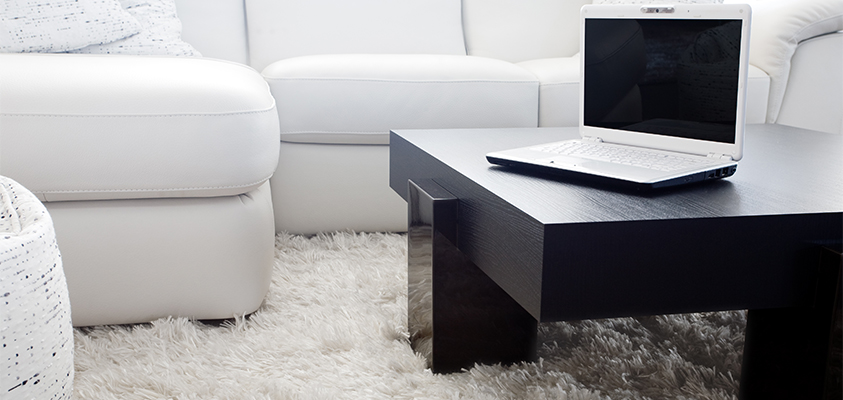
Add more warmth and soundproofing
If you’ve ever walked through an empty home, you may have noticed that rooms with hardwood echo more than rooms with carpeted floors. This is because carpet - and by extension rugs - are excellent insulators. The fabric covering dampens vibrations and absorbs reverberation, which not only helps block out ambient sound but can help block out your heavy-footed housemates, loud pets or playing children.
As for warming up your home, carpet fibers are natural insulators that can trap heat. This not only stops your inner warmth draining out of your toes (like on those freezing bathroom tiles in the middle of the night) but reduces the amount of total energy it takes to heat a room, which can save you money.
What’s cosier than a carpeted floor? Another plush-style rug! Layering a rug on carpet will add extra insulation to your floors and you’ll be able to sink into multiple layers of cosy comfort to keep your feet warm, especially during the winter months.
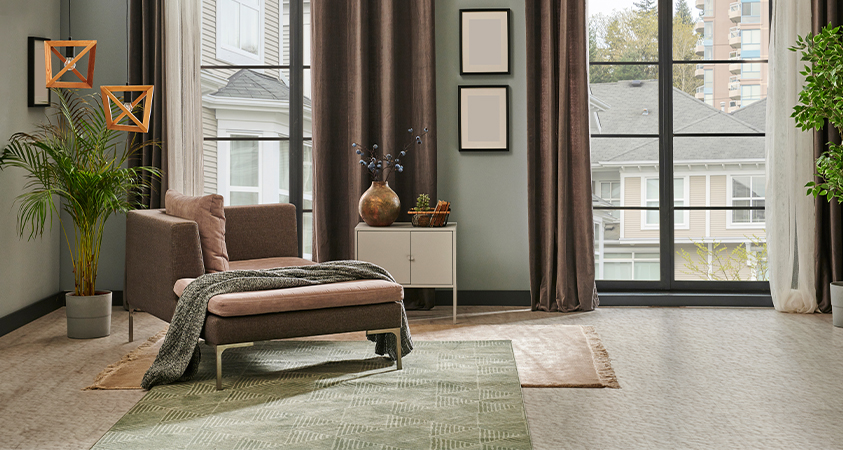
Zone your space
If you have an open-plan layout or just a large space, you might benefit from zoning your space. Keeping your work, entertainment and relaxation spots separate is good for your brain and even better for your home organisation. Rugs can help identify dedicated spaces in your home and keep your unique daily activities from clashing.
Preserve your existing carpet
Having expensive carpets ruined is annoying, whether you’re a tenant who wants to protect their bond or a homeowner who doesn’t want to damage their brand-new floor. Keep your new carpet in pristine condition by protecting it with a solid rug in high-traffic areas. Be careful though - wherever the original carpet is exposed, it will wear and tear at a faster rate than the rest of the carpet. We recommend removing your new rug every so often to allow the carpet underneath to breathe and fade evenly over time.
Stylish Tips for Layering Rugs Over Carpet
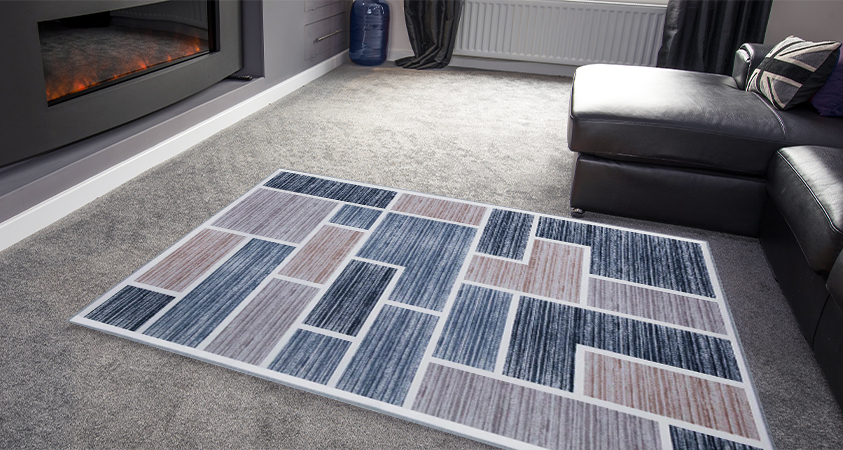
Vary the texture between rug and carpet
Contrasting textures are one way we can add character and visual interest to your decor. There are two main types of texture: visual (what the surface of an object looks like) and tactile (what an object feels like). Visual texture on a rug might come from the pattern, such as the brush stroked lines in our Oblo rug, while tactile texture will be affected by the type of material (soft wool, smooth silk, or rough hemp like a woven rug) and pile length (a long shag rug or a short velvety runner rug).
You might choose to layer rugs with different fabrics, rug sizes, patterns, or pile lengths. Experiment with different textures and see which works best for you.
Choose the right-sized rug
The size of your rug is incredibly important, as it will affect the balance of the room and determine the right furniture layout for your space. A too-small rug will make the space feel empty, while a too-large rug can make it feel crowded.
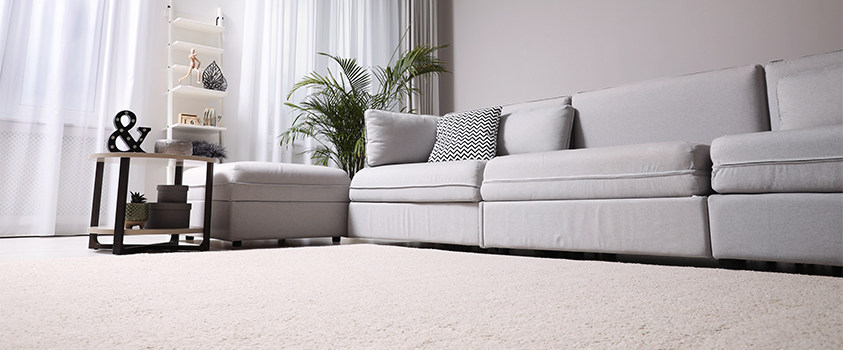
Area rugs generally work best in living rooms and bedrooms. Large rugs allow you to place furniture on top with all legs on the rug, an ideal layout style for both busy and relaxed spaces. Smaller pieces, like a runner rug, are great for hallways and entryways, while medium sized rugs can be used anywhere depending on your desired layout.
The perfect large rug should stay 30cm away from your walls. For medium and small area rugs, your rug should be at least the exact length of your main sofa seating, if not longer.
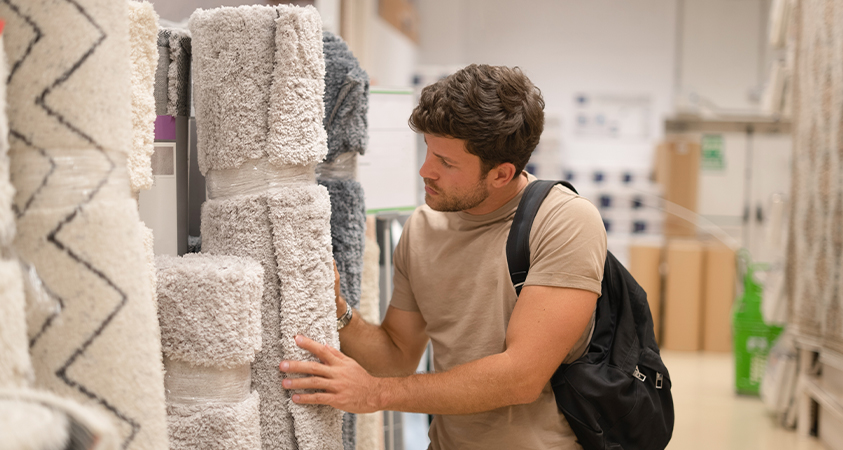
For more information about the right rug size and layout for your space, check out our blog How To Choose the Right Sized Rug for your Living Room.
Choose the right colour scheme for your rugs
Colour is one of the most important design elements of your interior style. Different hues can promote different moods, create focal points, and add personality to your space. If you have an established colour palette, choosing a matching rug will be simple. If you don’t, here are some easy ways you can find the perfect colour:
-
Choose warm or cool tones depending on the mood you want to create in your room. Yellow, red, orange and brown are perfect for stimulating spaces like your living room, dining room and kitchen, while green, blue and purple will work for relaxing or private spaces. Of course, your individual colour preferences will affect how the room feels to you, so you should go with your gut.
-
Choose three different objects in your room. Go to your local paint store and find swatches that match them. This is your new colour scheme. One of these colours should be on your wall, while the others will be for your furnishings - including your new rug.
-
Use a colour wheel. This can be a helpful tool to produce specific effects, like bold contrasting or complementary colours. You can read more on how to use a colour wheel to find your perfect shades here.

Too many patterns can make a room feel overwhelming or confusing, so stick to just one pattern on your floor. If your existing carpet has a bold pattern, you should layer a plain, solid colour rug. If you have solid colour wall to wall carpet, then a patterned rug might be the visual break you need.
Consider the pile
Pile height refers to the thickness of a carpet, measured from the backing of a rug to the surface. A long pile rug has a shaggy, comfortable texture but can be hard to maintain, while a short pile rug has a fuzzier feeling but will capture less dirt, dust and grime. Consider where you place your rug and what it will be used for. Your best bet for high-traffic areas is a short pile area rug that requires minimal cleaning efforts. If your focus is comfort and warmth, a shag rug with a long pile is just the thing you need.
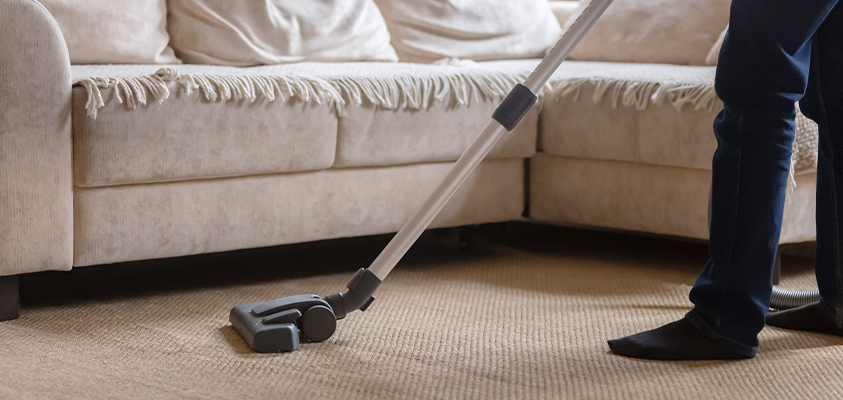
If you have a long pile carpet, looped carpet or another super soft carpet, it may be a safety hazard to place a rug on top as it will not have enough support and purchase to cover and stay in place. You may need to reinforce the top layer with rug tape on each of the four corners, even if you already use rubber-backed rugs. It will provide extra security to keep you and your family safe.
Always use a rug pad, rubber-backed rugs, rubber material or other non-slip bases to prevent rugs from slipping, and where possible anchor your rugs with furniture for additional staying power. Not only will your furniture look balanced on the rug, but you'll eliminate a potential tripping hazard.
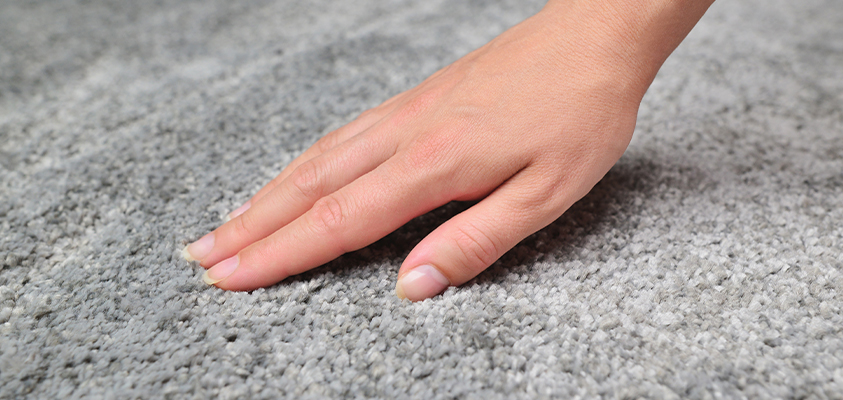
Choose the right layout
There are many ways you can arrange your furniture on a rug, but the main variations are:
-
All legs on the rug: All the furniture in the room, and all their legs, are on the rug.
-
Partial legs on the rug: The front or back legs of your furniture are on the rug. You might not have all your furniture pieces touching the rug, but you should include your main setting: the sofa, table and chair legs.
-
The float (no legs on the rug): No furniture legs are on the rug. It sits in the middle of the setting.
Most rooms will benefit from having all legs on the rug, however, the living room and bedroom can easily be styled with all three layouts.
Can You Put a Rug Over a Carpeted Bedroom?
The key goal of a bedroom is to relax and recuperate. Of all the rooms in the home, the bedroom probably benefits the most from cosy additions like a floor covering. Adding a rug to the room is a great way to bring depth and texture to your bedroom, and you’ll wake up feeling refreshed and walking on air. You'll want to choose a wool or other soft woven rug over hard surfaces like sisal, hemp or jute.
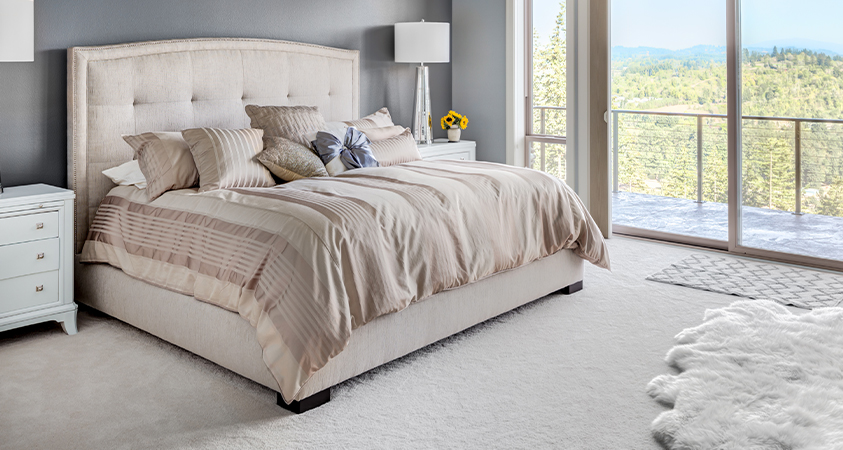
The best layout for a bedroom rug is when the bed and bedside tables are all arranged on top. It’s similar to the all legs layout in your living room, with all the key pieces in your room framed by a beautiful, comfortable rug. The next best layout has only the bed on the rug, with the rug reaching at least ¾ of the way underneath and the bedside tables completely off the edge. Finally, you can also place smaller rugs or runners on either side of the bed (or one side, if the bed is against the wall) with bedside tables either on or off. In each of these layouts, the rug should extend far enough to provide a soft landing for your toes as you get out of bed.
Looking for a traditional rug to cover your space? Artiss has a range of short pile, non-slip, affordable rugs in a variety of colours, patterns and sizes. We have oriental-style rugs for the boho eclectic interior designer, geometric rugs for pop or Art Deco flair, and other simple and classic rug designs to suit every kind of decor. Each of our plush-style rugs features a granular non-skid rug pad, stylish edges and water-repellant surface.
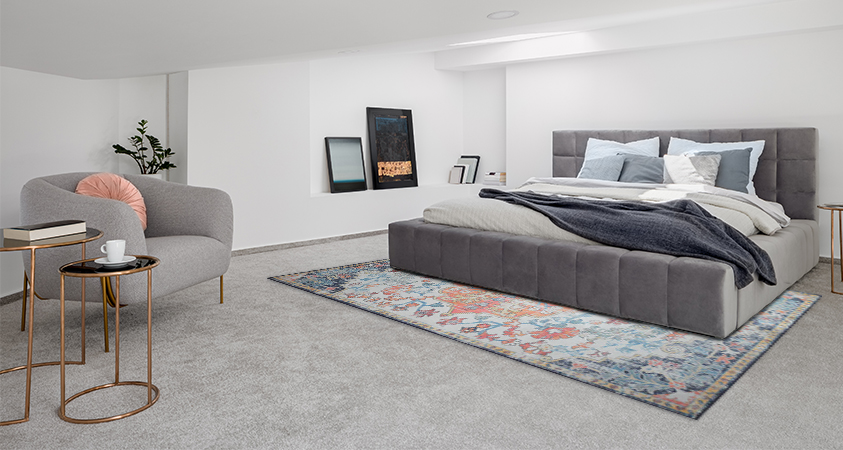
Looking for more design tips to add warmth and depth to your own home? You may enjoy our blogs 11 Inexpensive Ways to Transform Your Bedroom for a Good Night’s Sleep, How to Make a Small Room Look Bigger, and 8 Ways to Warm Up Your Interiors This Winter. For everything else, just visit our website and explore our range of affordable, stylish, durable furniture made from quality materials and delivered daily to thousands of Australian homes.








